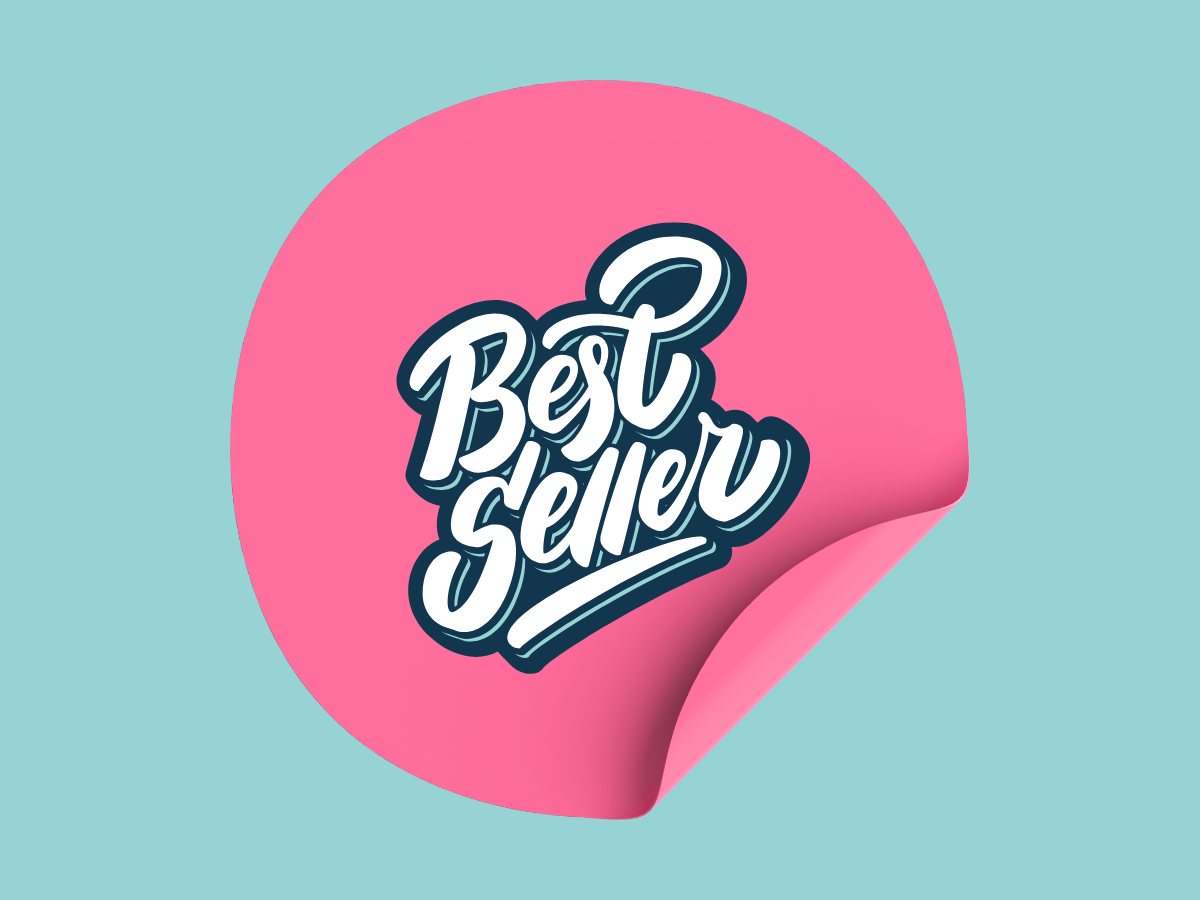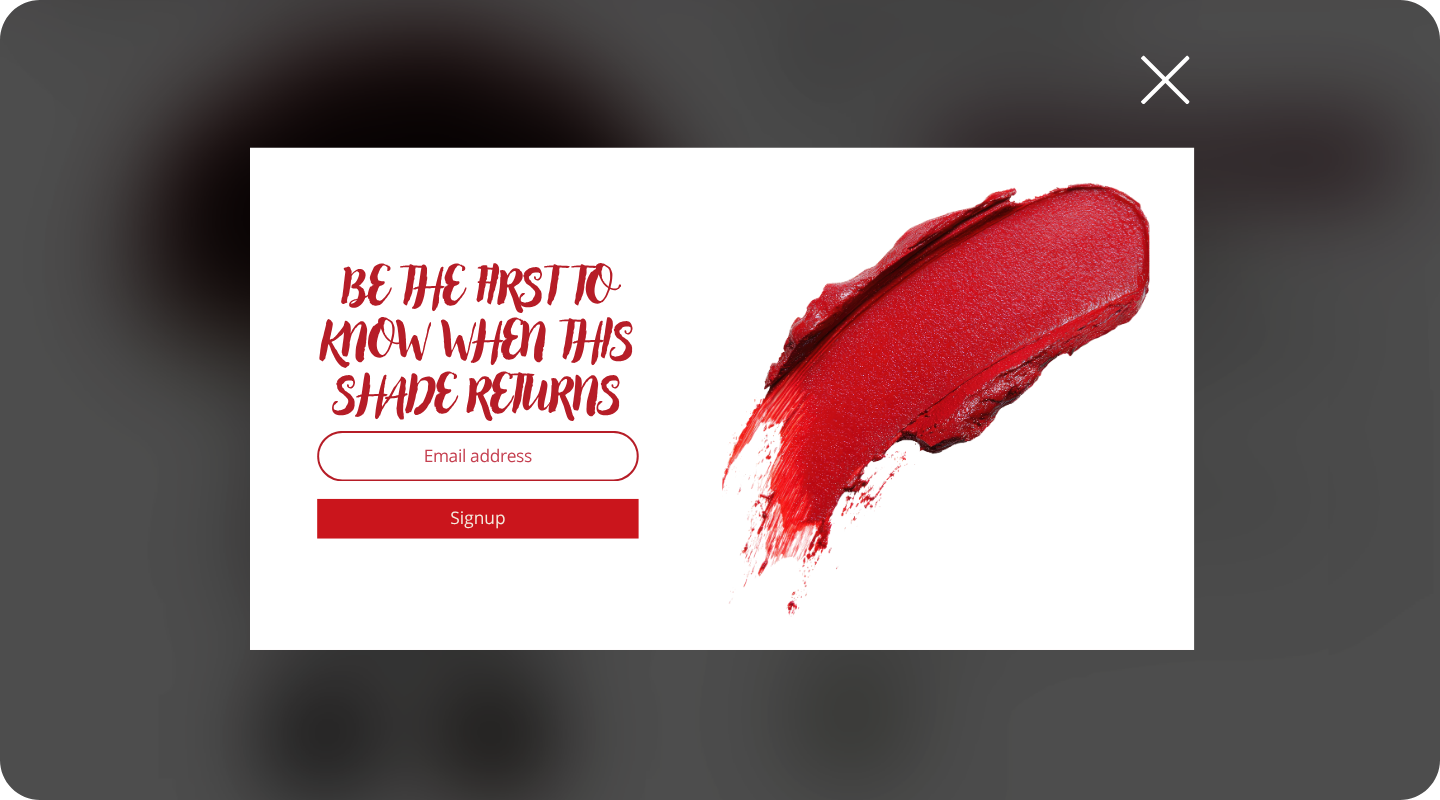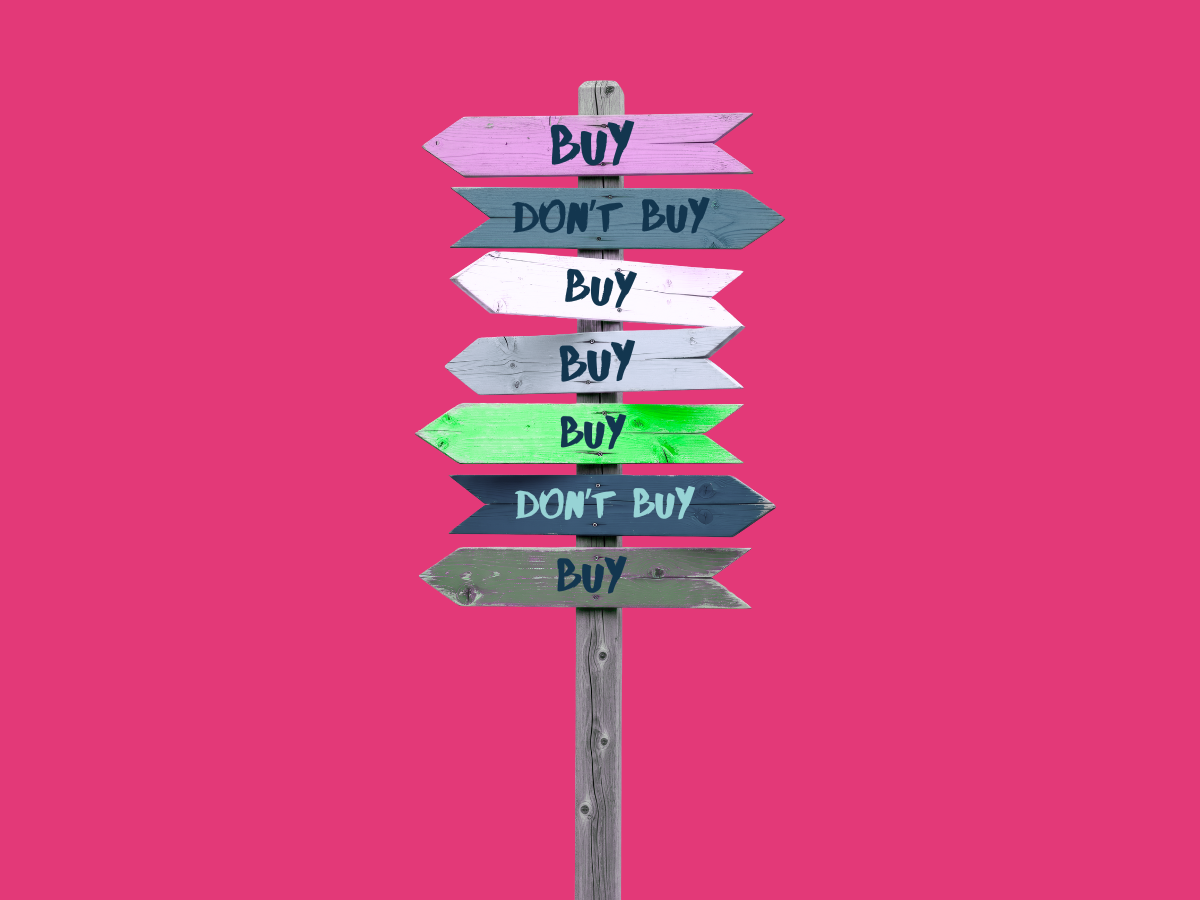What to do when your bestseller is out of stock

Your bestseller just went out of stock.
A customer clicks through to the product page, ready to buy. The "Out of Stock" message appears. They pause. Then they leave.
You've just lost more than a conversion. You've lost the chance to guide that customer to something they might love just as much.
Stock-outs are inevitable in retail. According to research from IHL Group, stock-outs cost retailers approximately $1.77 trillion globally each year. The question isn't whether they'll happen. The question is what you do when they do.
Some eCommerce marketers panic and reach for blanket discounts. They slash prices across substitute products, hoping something sticks. This approach erodes margin on items that would have sold anyway. It trains customers to wait for sales. And it still doesn't guarantee the conversion.
There's a smarter way. One that protects your brand, maintains margin, and actually helps customers find what they need.
Here's how to turn stock-outs from conversion killers into opportunities.
Why stock-outs create a decision point
The moment a customer discovers your bestseller is unavailable, they make a choice.
- They leave your site entirely
- They browse alternatives on your site
- They join a waitlist and come back later
Research from the Harvard Business Review indicates that 43% of customers switch retailers immediately when they encounter a stock-out.
However, what matters is that these customers are engaged. They came to your site with intent. They found a product they wanted. That intent doesn't disappear just because one item is unavailable.
Your job is to channel that intent toward a positive outcome.
The stock-out itself costs you one conversion. How you respond determines whether you lose the customer entirely or keep them (and your margin).
Strategy 1: Intelligent cross-sell to available alternatives
The simplest recovery approach is showing customers what you do have in stock.
Not a random product. Not your entire catalog. A genuinely similar alternative that solves the same need.
Make the connection obvious
When someone views an out-of-stock item, show them available alternatives immediately.
- "Similar styles available now"
- "Customers also love these alternatives"
- Clear images and descriptions that highlight similarities
The key is relevance. If your bestselling black ankle boot is out of stock, show other black ankle boots. Don't show sneakers. Don't show boots in entirely different styles. Make it easy for the customer to see why this alternative is a good fit for them.
Remove friction from the switch
The customer just experienced disappointment. Don't make them work hard to find an alternative.
- Display alternatives on the out-of-stock product page itself
- Show real-time inventory status on suggested items
- Enable one-click navigation to available options
Adding unnecessary steps between a customer and their purchase only increases the risk of abandonment.
This is where eCommerce platforms and personalization tools matter
Your eCommerce CRO strategy should include automated cross-selling that responds to inventory levels in real time.
Smart systems identify which alternatives a specific customer is most likely to consider based on their browsing behavior, not just product similarities. Someone who viewed multiple minimalist designs probably won't respond to ornate alternatives, even if they're technically "similar."
This approach maintains conversions without discounting. Some customers will switch naturally because the alternative genuinely meets their needs.
Strategy 2: Using offers strategically on substitute products
Not every customer will switch to an alternative at full price.
Some need an incentive. A slight nudge that makes trying something new feel worthwhile.
This is where discounts and promotions become strategic tools rather than desperate measures.
The margin-protecting approach
Here's what doesn't work: immediately discounting all alternatives to an out-of-stock item.
You're giving price reductions to customers who would have bought anyway. You're training browsers to expect discounts on substitutes. And you're eroding margin on inventory you could have sold at full price.
Instead, use behavioral signals to identify who actually needs the incentive.
- Time spent viewing alternatives without adding to the cart
- Return visits to the same alternative products
- Exit intent signals while browsing substitutes
- Cart abandonment on alternative items
The difference is precision.
How this works in practice
A customer views your out-of-stock bestseller. They click through to a similar item. They spend 30 seconds reading the description. They don't add it to their shopping cart.
This is a hesitant buyer. Someone who might need a slight push.
After another 15 seconds, or when they show exit intent, present a targeted offer:
"Try this instead and save 10%"

You're not discounting for everyone. You're not advertising site-wide sales. You're strategically using incentives to capture conversions that would otherwise be lost.
The customers who would buy the alternative at full price still do. You only discount when behavioral data suggests it's necessary to close the sale.
This is optimization in action. You're managing promotion spend to maximize both conversions and margin.
The role of AI in offer optimization
Manual targeting doesn't scale. You can't monitor every customer's behavior and decide in real-time whether they need an incentive.
This is where AI-powered personalization systems become valuable for retail operations.
Smart platforms analyze thousands of behavioral signals simultaneously:
- How long someone views a product
- Whether they've visited before
- What they've browsed in this session
- How they interact with alternative suggestions
- Historical conversion patterns for similar customer profiles
Then they make split-second decisions about whether to present an offer, and if so, what kind.
The result: higher conversions without margin erosion from unnecessary discounting.
Strategy 3: Waitlist strategies that don't require discounting
Some customers don't want an alternative. They want the specific item that's out of stock.
For these customers, waitlists capture the conversion opportunity without requiring immediate fulfillment.
The power of "notify me when available"
Research indicates that waitlist email campaigns achieve open rates of 50-60% and click-through rates of 20-30%, which are significantly higher than those of standard promotional emails.
Why? Because these customers already expressed clear intent. They wanted this specific product. The waitlist is permission to tell them when that's possible.
Making waitlists work for customer experience
Keep signup simple:
- Email address (required)
- Optional SMS for immediate notification
- Clear timeframe: "Expected back in stock in 2-3 weeks"
Don't make customers create an account just to join a waitlist. Remove every possible barrier between their interest and your ability to reach them later.

The margin protection benefit
Here's what makes waitlists powerful for eCommerce CRO: customers who wait are committed buyers.
They don't need discounting. They already want the product at full price. They're willing to wait for it.
When your bestseller comes back in stock, these customers convert at rates often exceeding 40%.
No promotion required. No margin erosion. Just customers buying what they wanted in the first place.
The notification sequence
When the item returns to inventory:
Email 1 (immediately):
- "It's back - your waitlist item is now available"
- Direct link to product
- Clear call to action: "Get yours before it sells out again"
- Emphasize limited availability if the restock quantity is small
Consider giving waitlist customers a 24-hour early access window. This creates VIP treatment without discounting. It rewards loyalty and builds brand affinity.
Email 2 (if they don't purchase within 48 hours):
- Gentle reminder with social proof
- "Others are buying - limited stock remaining" Include review highlights or customer photos
- Maintain urgency through scarcity, not price
This approach maintains brand value while maximizing conversions from highly qualified leads.
Strategy 4: Protecting margin when high-demand items return
Your bestseller is back in stock. Demand is still high. This is not the time to discount.
Why restocking doesn't require sales
Discounting a popular item when it returns sends several wrong messages:
- The item wasn't worth full price to begin with
- Customers should wait for sales on your bestsellers
- Scarcity doesn't actually matter
You're training customers to wait for deals rather than buy when they want something.
The smart restocking approach
Notify waitlist customers first at full price. Give them that 24-hour window. Let urgency and desire drive the conversion.
Then announce to your broader audience:
- "Back in stock - grab yours before they're gone"
- "[Product name] has returned - limited quantities available"
- Focus messaging on availability and desirability, not price
When to consider offers on restocked items
There are specific scenarios where strategic incentives on restocked items make sense:
- The restock arrived later than expected (customer interest may have cooled)
- You received significantly more inventory than the demand warrants
- The item is approaching the end of the season and needs to clear
Even then, use targeted promotions rather than blanket discounts:
- Offer only to customers who previously browsed the item
- Test small incentives (5-10%) before larger markdowns
- Monitor velocity to see if discounting is actually necessary
The default should always be full price. Discounting should be a data-driven decision based on actual demand signals.
Connecting inventory management to promotional strategy
Stock-outs reveal how well your promotional strategy and inventory planning work together.
The retailers who handle stock-outs best aren't just reactive. They build promotional systems that anticipate and respond to inventory challenges automatically.
The data-driven recovery approach
Track these metrics for every stock-out:
- Conversion rate on suggested alternatives (with and without offers)
- Average discount level that moves hesitant buyers waitlist signup rate
- Waitlist-to-purchase conversion rate
- Time to restock and immediate sell-through rate
This data tells you what actually works for your specific customers and products.
How intelligent systems improve over time
The best eCommerce platforms and promotion optimization tools don't just execute your strategy. They learn from results and get smarter.
AI-powered systems identify patterns you might miss:
- Which product attributes matter most when customers consider alternatives
- How much incentive do different customer segments need
- Which alternatives drive the highest lifetime value
- When waitlists outperform immediate alternatives
According to McKinsey research, retailers using AI for personalization see 10-15% increases in conversion rates and 10-20% improvements in marketing ROI.
The key is building systems that respond to real-time inventory while maintaining your brand and margin standards.
Integration with your eCommerce platform
Your stock-out recovery strategy only works if it integrates seamlessly with your existing tech stack.
The goal is automation that feels personal. Customers receive helpful suggestions and strategic incentives precisely when needed, without requiring manual intervention from your team.
Making stock-outs work for your business
Stock-outs will happen. Strong demand, supply chain delays, and forecasting challenges are part of retail.
The difference between losing customers and keeping them comes down to your response strategy.
The four-part recovery framework:
- Show intelligent alternatives that genuinely solve customer needs
- Use strategic, behavioral targeting to incentivize only when necessary
- Build waitlists that capture intent without requiring discounts
- Protect margin when high-demand items return to stock
Each element protects something important. Cross-selling maintains conversions. Targeted offers optimize promotion spend. Waitlists capture committed buyers. Margin protection on restocked items sustains profitability.
Together, they turn stock-outs from panic moments into planned responses.
What this looks like in practice
When your bestseller goes out of stock, you don't scramble. Your system responds:
- Qualified alternatives appear automatically on the product page Behavioral signals identify which customers need incentives
- Strategic offers present to hesitant browsers
- Other customers see waitlist options
- Everyone gets a helpful, personalized experience
When the item returns, your waitlist converts at high rates. Full price. No margin erosion.
And you have data showing exactly what worked, making your response smarter next time.
This is modern eCommerce CRO. Not panic discounting. Strategic optimization that maintains brand value while maximizing every conversion opportunity.
The retailers winning in this space don't have perfect inventory forecasting (no one does). They have smart recovery systems that turn inevitable stock-outs into opportunities rather than losses.





